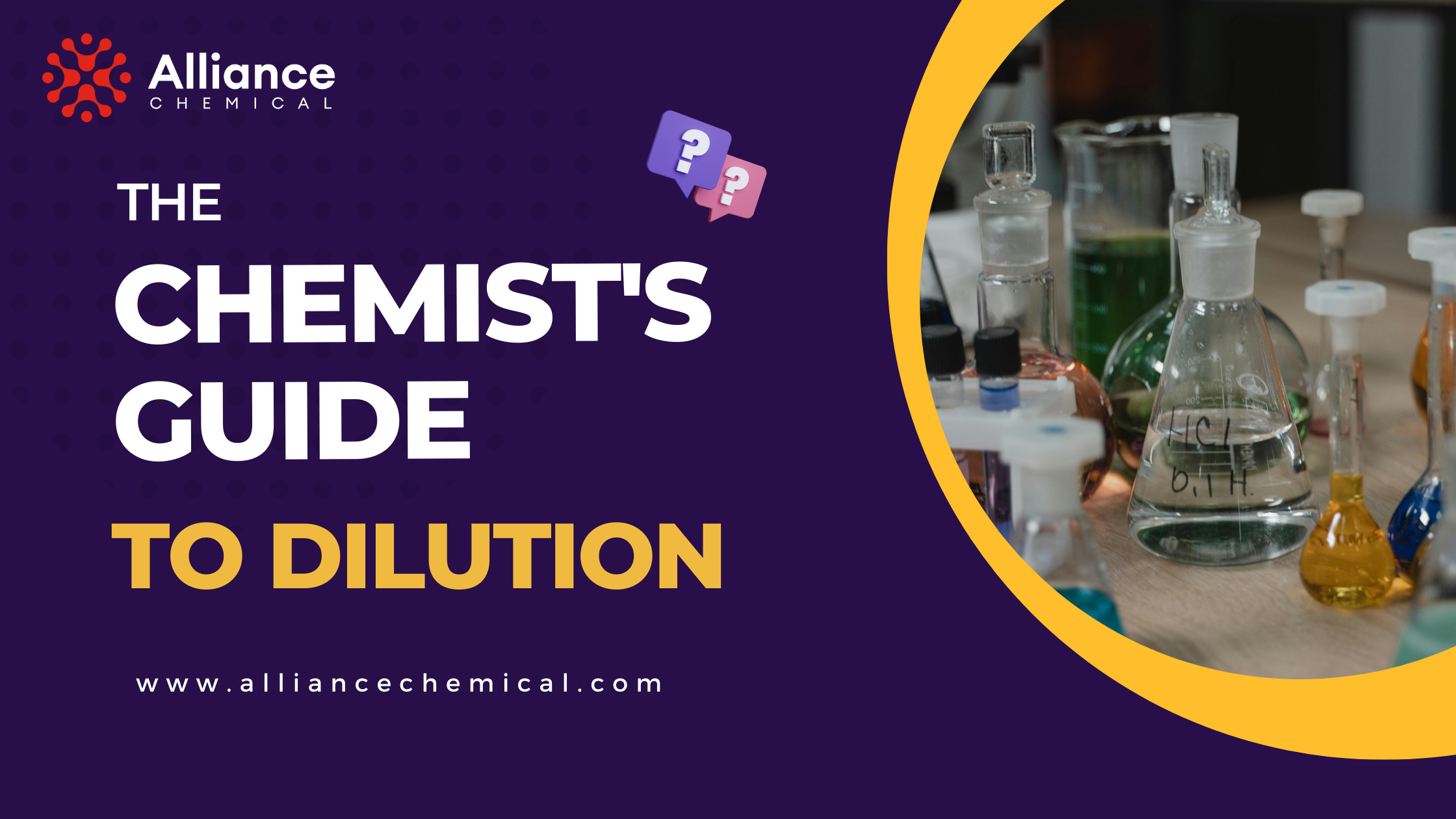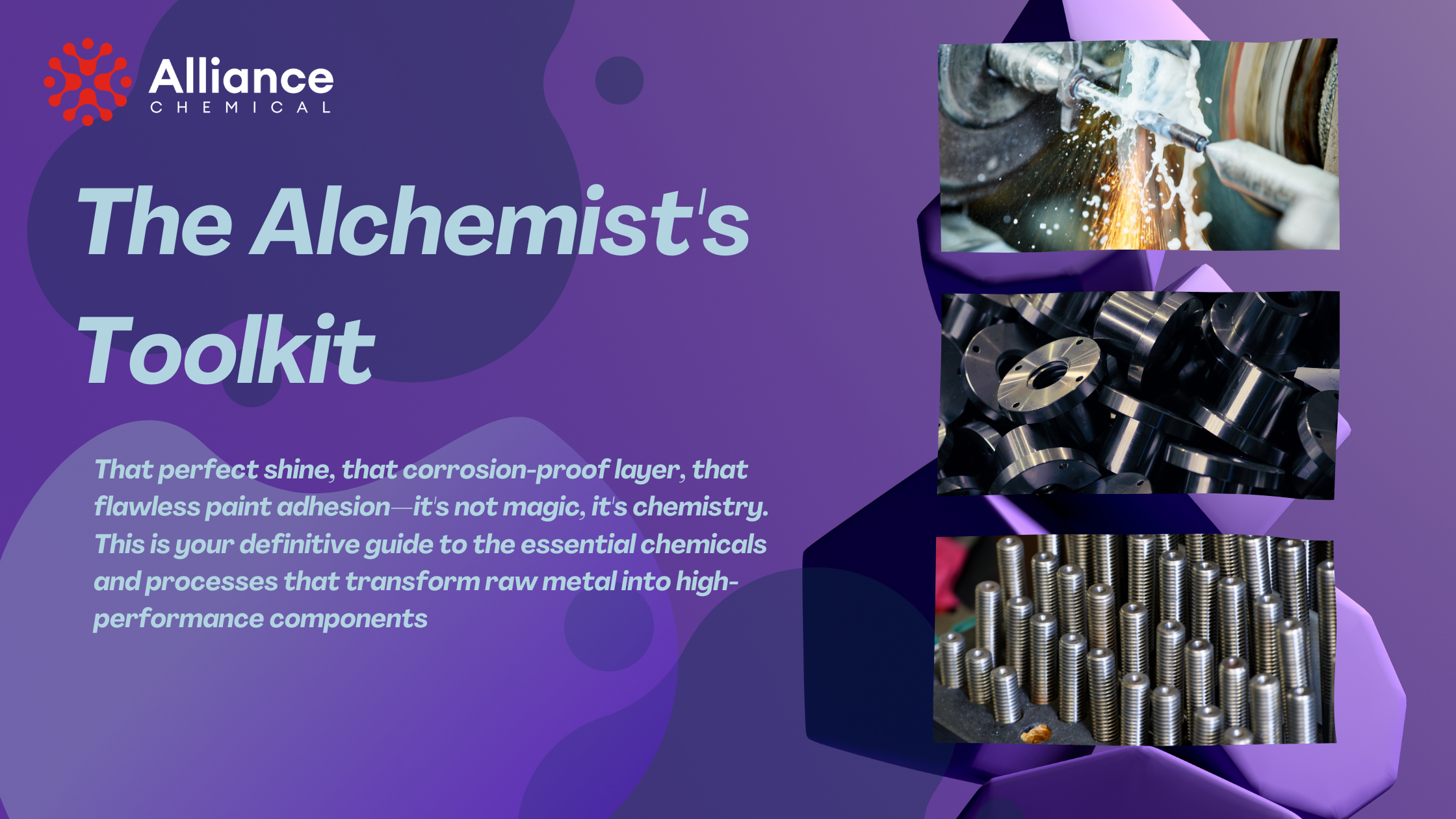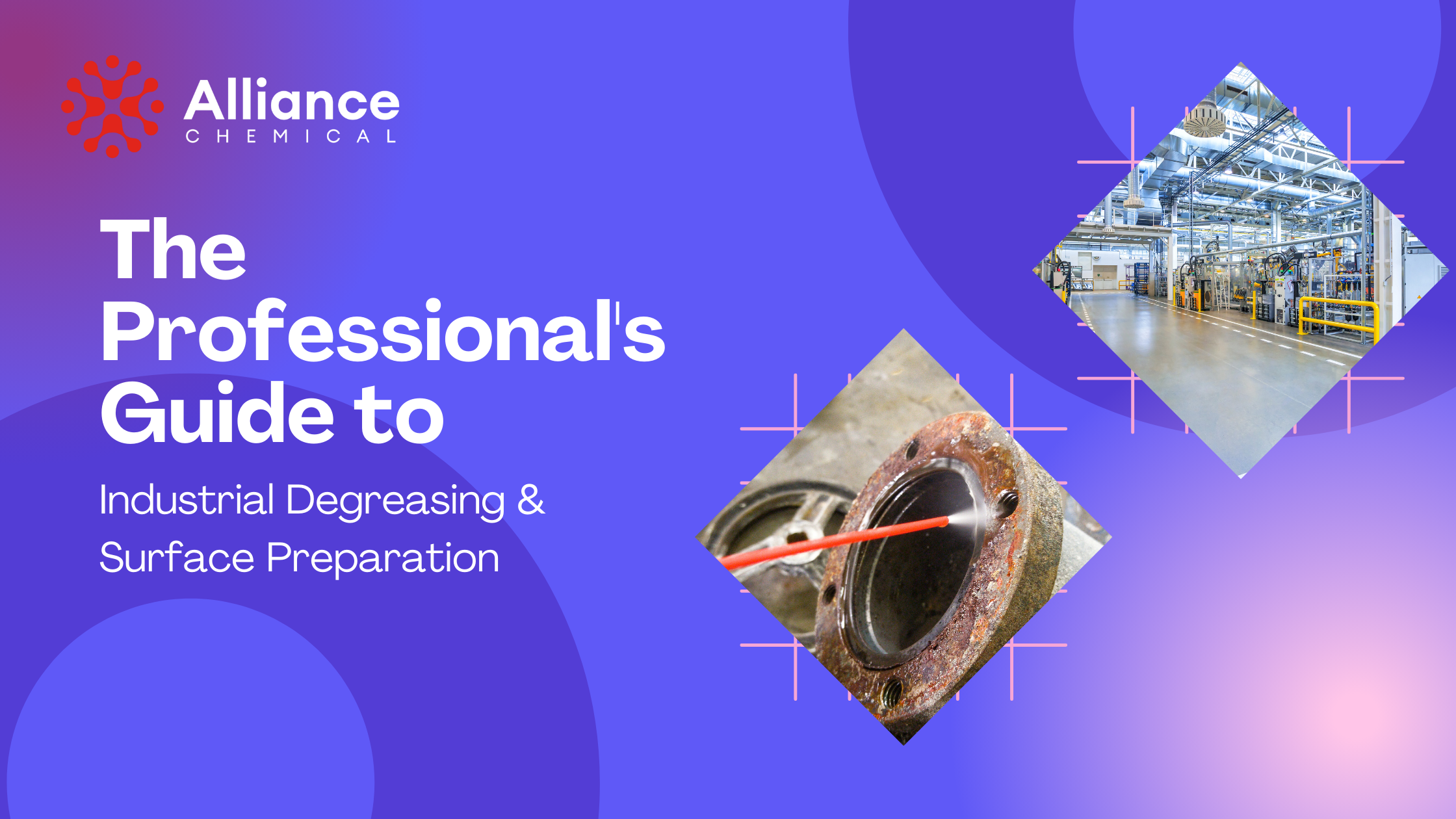
The Unseen Chemistry of AI: The Definitive Guide to Data Center Coolants & Chemicals
Table of Contents
Summary
The AI revolution runs on power, but it's limited by heat. When thermal throttling costs millions, using the right cooling chemistry isn't optional, it's mission-critical. This definitive guide by a 15-year industry expert breaks down the essential coolants (EG vs. PG), the non-negotiable rules of maintenance, and the full chemical ecosystem required to keep high-performance data centers from melting down.
The AI revolution runs on massive computational power. That power generates immense heat. This is the expert's guide to the essential chemicals that keep the future cool. A deep dive by Andre Taki of Alliance Chemical.
The Unseen Heat Behind the Cloud
In my 15+ years in the chemical industry, I've seen technologies evolve at lightning speed. But nothing compares to the explosive growth of Artificial Intelligence. Visionaries like Elon Musk and Sam Altman, and hardware pioneers like NVIDIA's Jensen Huang, have unleashed a revolution that is reshaping our world. But this revolution has a dirty secret: it's built on a foundation of brute-force computational power, and that power generates a colossal amount of heat.

The visionaries of AI have created a trillion-dollar industry with an unprecedented thermal challenge.
Performance in the world of AI isn't just limited by algorithms; it's limited by the laws of thermodynamics. The single biggest challenge facing data center operators today is removing this heat efficiently. This guide is our definitive protocol for understanding the essential chemistry that allows these groundbreaking technologies to function without melting down.
The Physics of a Trillion Calculations: The Heat Problem
A modern AI GPU, like the ones NVIDIA develops, packs billions of transistors into a space the size of a postage stamp. When operating, this creates an incredible **heat flux**—a measure of heat energy flowing through a given area, often expressed in watts per square centimeter (W/cm²). While older CPUs might have a heat flux of 50-100 W/cm², the latest AI accelerators can exceed 300 W/cm². At these levels, traditional air cooling hits a literal wall.
Why Air Cooling Fails at High Density
Air has a very low **specific heat capacity** and low density. It simply cannot absorb and carry away heat fast enough to keep a high-flux chip within its safe operating temperature. This leads to **thermal throttling**, where the chip's performance is automatically and drastically reduced to prevent physical damage. For a multi-billion dollar AI cluster, thermal throttling isn't just an inconvenience; it's a catastrophic loss of ROI.

The Spectrum of Liquid Cooling
The solution is to use a liquid, which can absorb and transport thousands of times more heat energy than the same volume of air. There are three primary strategies in modern data centers:
- Rear Door Heat Exchangers (RDHx): A "low-hanging fruit" where a liquid-filled radiator is attached to the back of a server rack to cool the exhaust air.
- Direct-to-Chip Cooling: The current industry standard. A liquid-cooled "cold plate" sits directly on top of the GPU or CPU, absorbing heat and transporting it out of the server via a closed loop.
- Immersion Cooling: The most advanced method, where entire servers are submerged in a non-conductive (dielectric) fluid. This provides the ultimate in thermal management but requires specialized fluids and infrastructure.
For the most common and rapidly growing methods (RDHx and Direct-to-Chip), the cooling fluid is almost always a water-glycol mixture. But as we'll see, using the wrong fluid is a recipe for disaster.
The Arsenal: The Chemicals of High-Performance Cooling
An industrial coolant is not just "antifreeze." It is a sophisticated, engineered fluid designed to manage heat, fight corrosion, and protect the system for years of continuous, 24/7 operation.

High-performance GPUs are the engines of AI, and they require high-performance liquid cooling.
The Glycol Solution: The Heart of the Coolant
The foundation of almost all water-based liquid cooling systems is a mixture of water and a glycol. The two kings of the coolant world are Ethylene Glycol (EG) and Propylene Glycol (PG).
- Ethylene Glycol (EG) - The High-Performance Standard: EG is the champion of heat transfer. It has a lower viscosity (it flows more easily) and superior thermal conductivity. For mission-critical systems where every degree of cooling equals more processing power, EG is the professional's choice. Its only drawback is its toxicity, requiring careful handling in a closed-loop system.
- Propylene Glycol (PG) - The Safe & Non-Toxic Solution: While slightly less efficient at heat transfer, PG's key advantage is its outstanding safety profile. It is Generally Recognized as Safe (GRAS) by the FDA, making it the required choice for any system where human or environmental contact is a possibility.
Deep Dive: The Inhibitor Package
Andre's Tip: Never use raw, uninhibited glycol. The most important part of an industrial coolant is the "inhibitor package" - a blend of chemicals designed to prevent corrosion. The two main types are:
- OAT (Organic Acid Technology): A modern, long-life inhibitor package that provides excellent protection for aluminum components common in data centers.
- Hybrid OAT (HOAT): A blend of OAT and traditional silicate inhibitors, offering robust, fast-acting protection for mixed-metal systems.
This package is what protects the copper cold plates, aluminum radiators, and steel pipes in your system from slowly dissolving into a corrosive sludge.
The Critical Base: Why You MUST Use Deionized Water
This is the non-negotiable rule I drill into every data center client. **Never, ever mix your glycol with tap water.** Tap water is full of minerals like calcium, magnesium, and chlorides. These ions are the mortal enemy of a cooling system. They react with and deplete the inhibitor package, cause galvanic corrosion between different metals, and form insulating mineral scale that clogs channels and drastically reduces cooling performance.
The only professional choice is high-purity **Deionized (DI) Water**. It is a blank slate, free of the dissolved solids that cause corrosion and scale, ensuring the coolant works exactly as designed.
The Professional's Coolant Playbook
The Coolant Mixing & Testing Protocol
- Source High-Quality Fluids: Start with an inhibited glycol concentrate and drums of ASTM-certified Deionized Water.
- Calculate Your Ratio: A typical 50/50 mix provides excellent freeze protection (to ~ -34°F) and corrosion inhibition. Use a dedicated, clean vessel for mixing.
- Verify the Concentration: Use a refractometer calibrated for the specific type of glycol (EG or PG) to verify the final concentration and freeze point.
- Monitor In-Service: Annually, test a sample of the in-service coolant for its pH and inhibitor levels. A pH that has dropped significantly indicates the inhibitor package is depleted and the fluid needs to be replaced.
The Full Facility Chemical Ecosystem

A data center is a complex facility with multiple chemical needs to ensure 24/7/365 uptime.
- Uninterruptible Power Supply (UPS): Every data center relies on massive banks of lead-acid batteries for backup power. The electrolyte in these batteries is **Sulfuric Acid (Battery Acid)**. Regular specific gravity checks and maintenance are critical.
- Component Cleaning: During upgrades, the only choice for cleaning sensitive CPUs, heatsinks, and circuit boards is high-purity **Isopropyl Alcohol (ACS Grade)**, which removes old thermal paste and residues without leaving any contaminants.
- **Fire Suppression:** Many data centers use inert gas or chemical agent fire suppression systems, which rely on chemicals like HFCs to extinguish fires without damaging electronics.
- Facility Water & Cooling Towers: For facilities that use evaporative cooling, **Sodium Hypochlorite** is essential for preventing biological growth.









